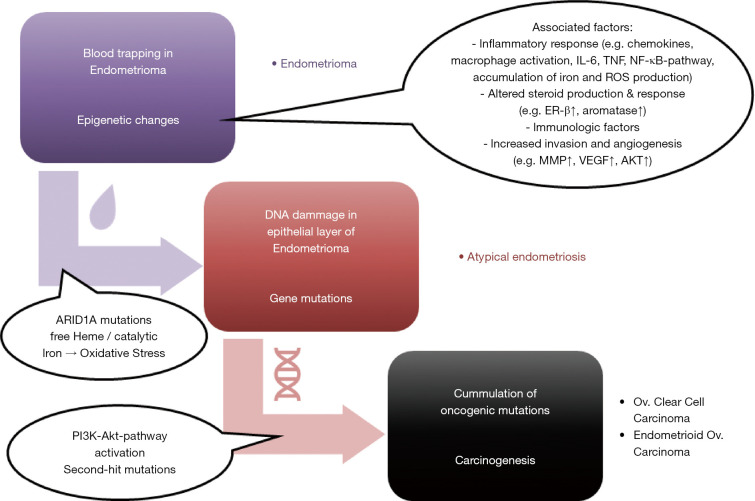Figure 3.
Hypothetic model of pathogenesis of endometriosis-associated ovarian carcinoma. Reactive oxygen species (ROS) due to free heme and catalytic iron contained in the trapped blood in endometriomas may lead to increased oxidative stress and DNA damage in the epithelial layer of endometriomas. This may result in mutations and epigenetic changes, including mutations in the tumor suppressor gene ARID1A and possible second-hit mutations as well as activation of the PI3K-AKT-mTOR pathway to escape apoptosis caused by increased oxidative stress. The accumulation of oncogenic mutations in atypical endometriosis may ultimately lead to the development of endometriosis-associated ovarian clear cell (OCC) and endometrioid (EnOC) carcinomas (adapted from Vercellini et al., Hum Reprod, 2011 and Samartzis et al., GYNÄKOLOGIE, 2018).

